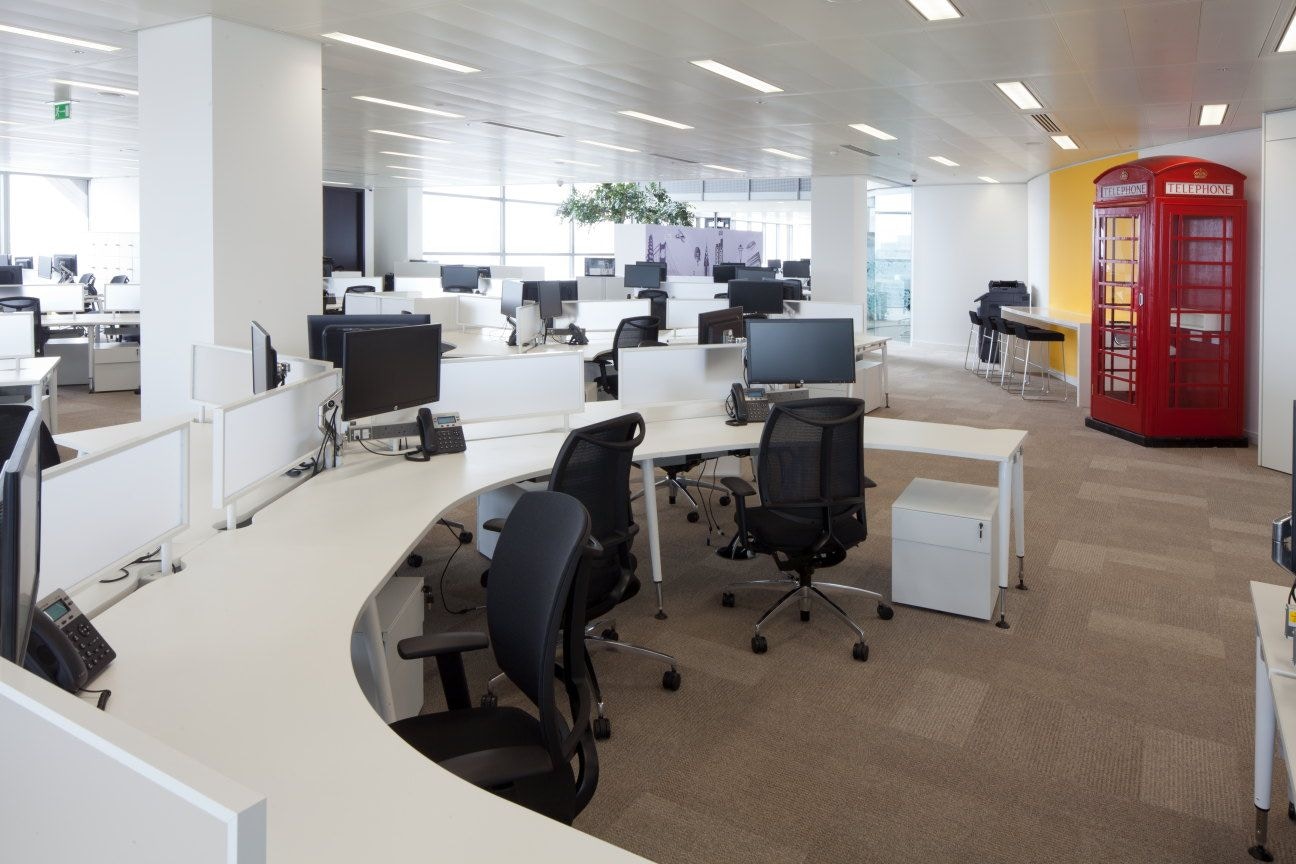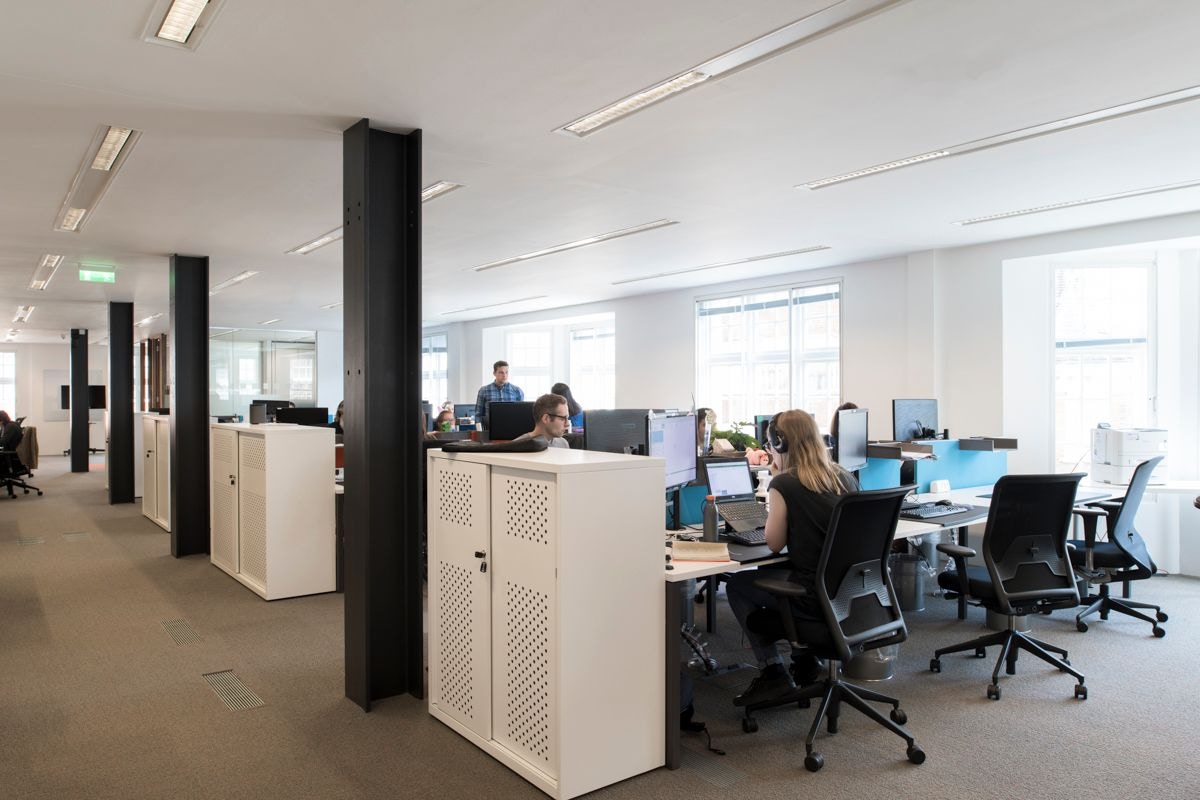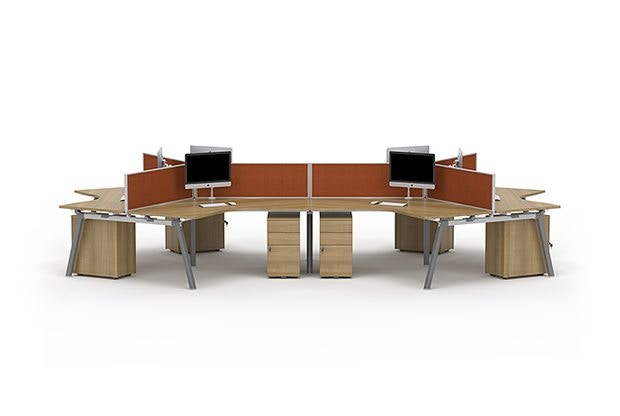Office layout plays a pivotal role in productivity and collaboration. Selecting the right design can be a complex task, with various factors to consider. This comprehensive guide aims to explore three prominent office layouts: linear, radial, and organic. By understanding the unique characteristics and benefits of each, businesses can create a workspace that fosters innovation, efficiency, and a cohesive work culture.
Linear office layout: Definition and Example
The linear office layout follows a traditional approach, arranging areas and departments in a sequential pattern, often in straight lines. This layout promotes organisation and is generally preferred by businesses with many established departments.
A classic example of a linear office layout is found at Savills’ global headquarters at 33 Margaret Street. Housing over 800 staff across seven floors, the design maintains a linear, open plan, covering nearly 100,000 square feet. This layout demonstrates the effectiveness of sequential arrangement, fostering a structured environment that aligns well with the corporate culture of established organizations. The streamlined design offers a sense of order, simplifies navigation, and helps in defining clear departmental boundaries, making it a favored choice for many businesses today.


